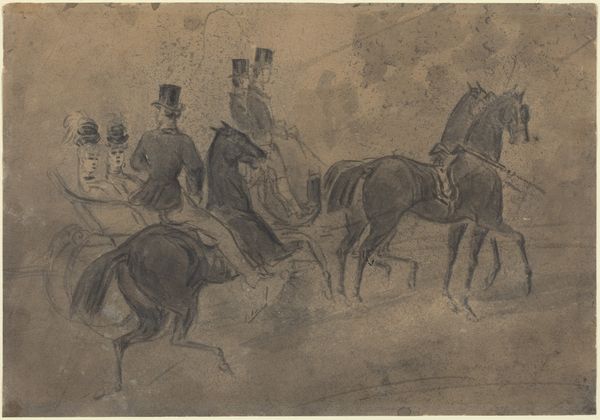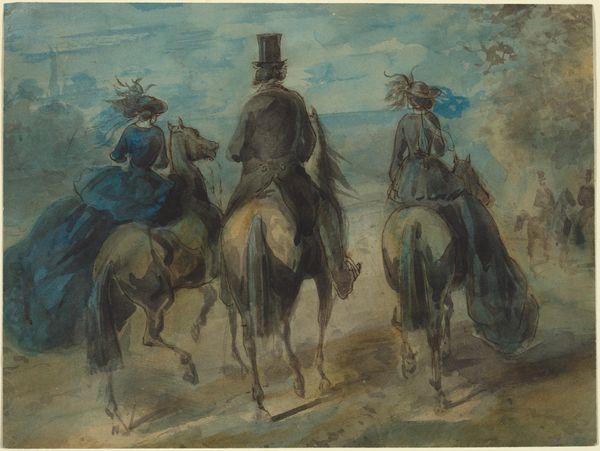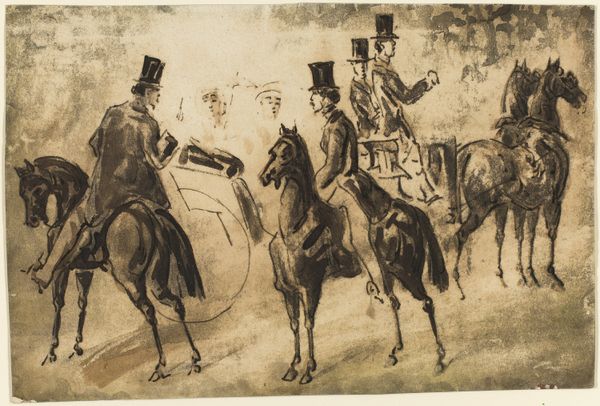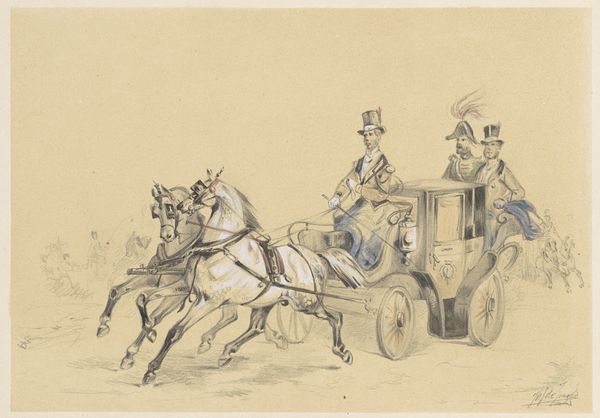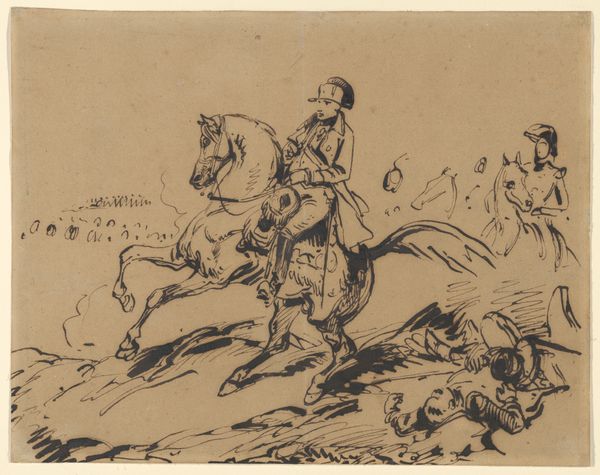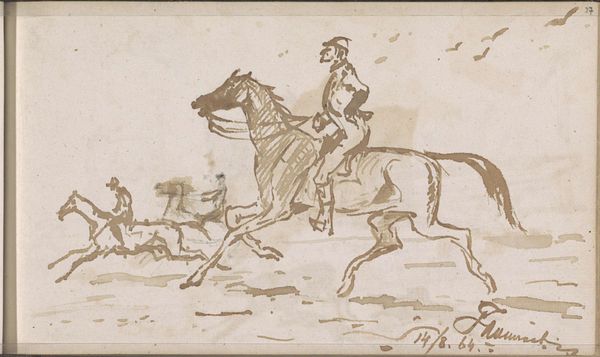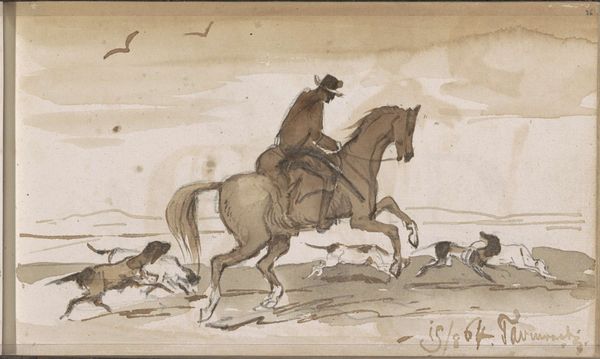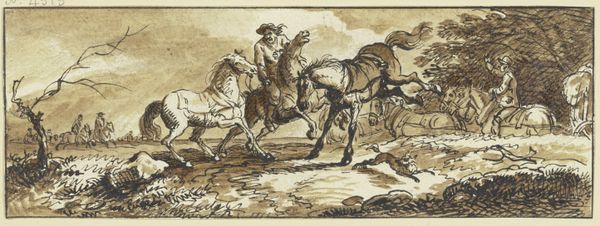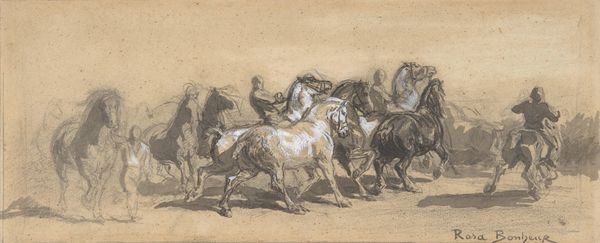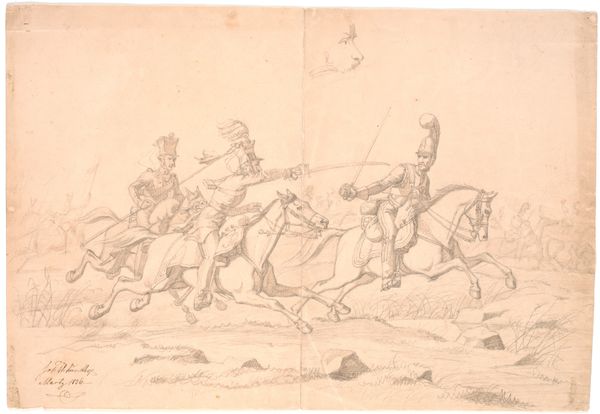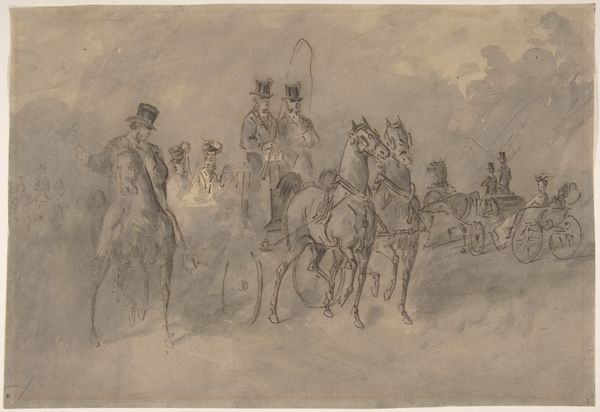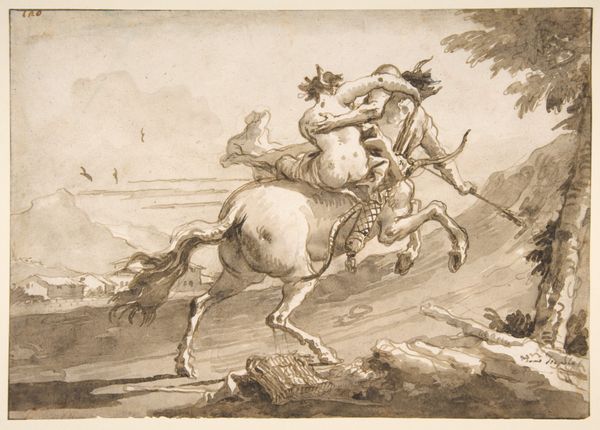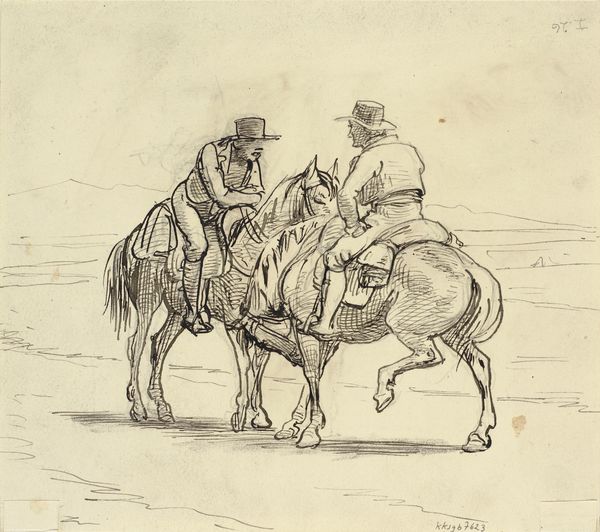
drawing, ink, charcoal
#
portrait
#
drawing
#
flâneur
#
ink painting
#
landscape
#
charcoal drawing
#
figuration
#
ink
#
romanticism
#
cityscape
#
genre-painting
#
charcoal
Dimensions: overall (approximate): 22.8 x 34.5 cm (9 x 13 9/16 in.)
Copyright: National Gallery of Art: CC0 1.0
Curator: Welcome. Here we have Constantin Guys’ work, “Cavalier and Two Ladies on Horseback.” Executed in ink and charcoal, it presents a lively scene of equestrian figures. Editor: The charcoal work gives it this instant aged feeling. There is something haunting about it that transcends portraiture or historical piece; it feels very alive even now. You can see where he's overworked areas with deep strokes almost etching forms out rather than just describing what's there. Curator: Precisely, it’s that use of contrasting textures through material properties where light meets dark which enhances the piece dynamically. Look at how the negative space is carved with precision; see also the romantic landscape background providing the context. Editor: It is more than mere social reportage; the visible materiality exposes aspects like labour or availability of media at play then too. Those wide flowing dresses, and even the horse tails are all about movement! This all is meticulously composed, from materials that show up use very transparently in its end result. Curator: It is a very clear and specific period style using dress as an iconographical representation of the flâneur archetype itself within urbanization taking centre-stage. Each visual marker emphasizes wealth alongside certain codes related within Parisian social dynamics. Editor: But did Guys ever actually address those socioeconomic conditions? The actual act involved physically, materially drawing, sketching quickly in public—all activities linked tightly not just visual taste, but labor behind presenting these urban types who depended much deeper upon real unseen hands at ground levels within social classes? Curator: I'm drawn by the overall atmospheric effect and use formal shapes for a reading upon its own merit despite, admittedly needing socio historical perspective for true insight. Editor: And isn't every single touch laid, then considered as social commentary indirectly since labor too became abstracted here? Each stroke contains stories themselves and Guys becomes almost interpreter or historian then Curator: Well I admire its pure aesthetic handling along surface depths, even still through varied lens perspectives exist Editor: Ultimately that very materiality still connects with worlds then…perhaps there indeed does remain endless possibility within surfaces even!
Comments
No comments
Be the first to comment and join the conversation on the ultimate creative platform.
